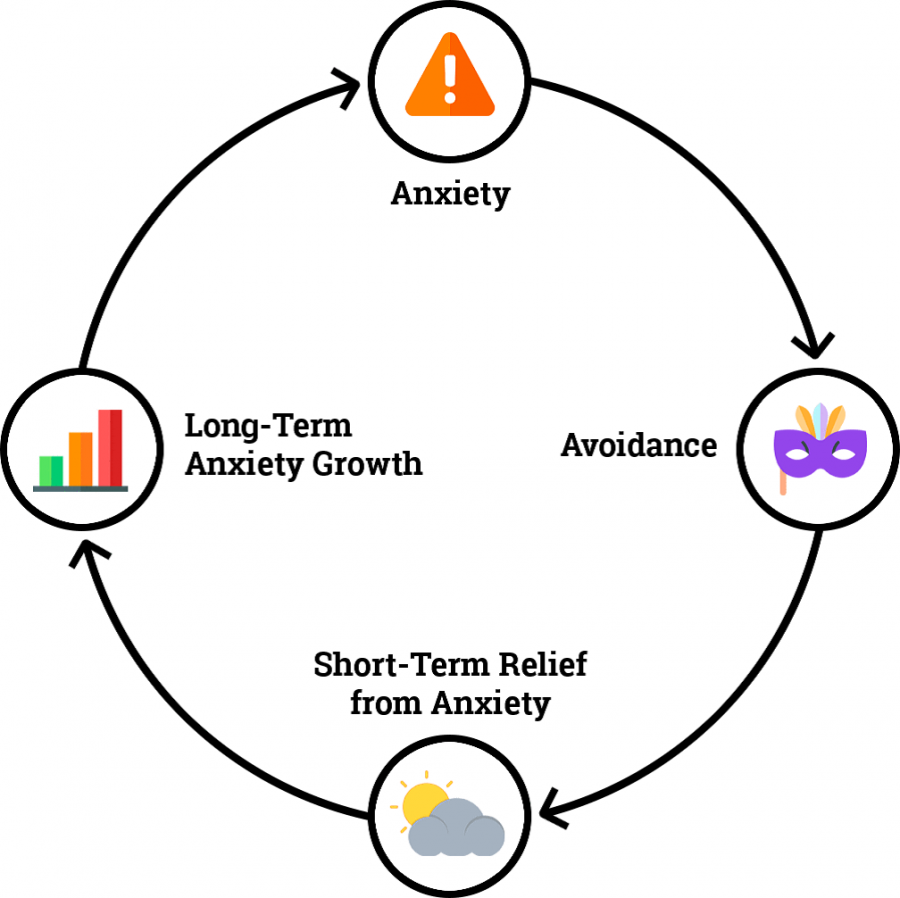
Anxiety disorders and obsessive-compulsive disorders can be highly stressful and debilitating for individuals who are struggling with these conditions as well as for their family members. The presentation of symptoms often leaves loved ones feeling confused and bewildered. Individuals who are struggling with these conditions first-hand may have difficulty articulating what is going on and explaining how they are feeling. During moments in which they are feeling relatively calm, they may identify that they realize their concerns aren’t logical or that their concerns are excessive in some way. Despite this awareness, they may feel rather powerless in breaking free from anxiety’s demands when their symptoms are elevated.
A critical component of anxiety and OCD treatment is education. It is vital that patients and their loved ones (particularly family members that they are living with) understand the nature of their condition and how it manifests. While focal points of education may differ from patient to patient based upon their individual symptom profile, there are elements of education that remain the same across the board, no matter what presenting issue(s) is being treated. One such element is educating patients and family members about the cycle of anxiety and OCD. Please see the graphic below for a visual representation of the cycle:

Image derived from TherapistAid.com
Anxiety Is Triggered
At the top of the circle is a hazard sign, which represents anxiety. This is the beginning of the cycle: anxiety has been triggered by a stressful stimulus, which may include thoughts, mental images, memories, bodily sensations, things seen on the news, social media, and certain activities, events, interactions, etc. When anxiety is triggered, the individual is in fight-or-flight mode (see our blog: Deconstruction of a Panic Attack) and their attention narrows to focus solely on the provoking stimulus. Overfocusing on an anxiety-inducing stimulus raises stress levels and the individual begins to feel overwhelmed or flooded. In response, they will likely seek out some way to avoid the stimulus.
Avoidance Ensues
The second stop in the anxiety cycle is avoidance. Avoidance can take many different forms, such as physical avoidance (removing oneself from the stressful situation by leaving), mental avoidance (thinking of something else, blasting music from your earbuds, going to sleep, etc.), or engaging in some other sort of safety behavior or compulsion, such as going on your phone, asking for reassurance, engaging in online researching, mentally replaying the situation, redoing the task, making up an excuse, having another person step in, shutting down, etc. As depicted in the graphic, avoidance is associated with short-term relief from anxiety.
Short-Term Relief from Anxiety
The relief obtained from engaging in avoidance is indeed short-lived. Regardless of the duration of its staying power, the pull that an anxious individual feels towards seeking some sort of avoidance is substantial. The reason for this is because avoidance is negatively reinforcing. Behavioral psychology principles tell us that any behavior that is rewarded, whether it is negatively or positively rewarded, is more likely to continue. People tend to be more familiar with positive reinforcements, such as rewards. Negative reinforcement means that an aversive stimulus is removed and as a result, relief is experienced. In this context, the aversive stimulus is whatever is provoking the anxiety. In other words, negative reinforcement allows people to diminish their experience of anxiety (at least in the moment). There are countless other examples of negative reinforcement outside the context of anxiety. For example, when you get into your car and forget to put on your seatbelt, your car will begin emitting a beeping noise to prompt you to put on your seatbelt. Once you comply, the beeping noise goes away – that is negative reinforcement. Ever wonder why alarm clocks (or phone alarms these days) sound so obnoxious? That is negative reinforcement at work! We will leave our warm comfy beds in order to end the jarring sound of the alarm. Another example of negative reinforcement is taking something to alleviate a headache. The next time a headache presents, we will be more likely to turn to the same strategy for relief.
 Negative reinforcements can be just as powerful of motivators as positive reinforcements, and in the case of anxiety and obsessive-compulsive disorders, they may be deemed as being even more powerful. The problem with negative reinforcement is that the relief is only temporary. Consequently, people begin to rely more heavily on their avoidance strategies as the course of their anxiety or OCD progresses. Unfortunately, the more an individual engages in an avoidance strategy, the more he or she will perceive the need for the strategy. Over time, the strategy will become less and less effective and the associated relief will last for briefer and briefer amounts of time. Put another way, the more you avoid, the more you will feel like avoidance is your only option and, to make matters worse, the relief you experience from the avoidance becomes increasingly short-lived as untreated symptoms worsen. This brings us to our final stop in the cycle: long-term anxiety growth.
Negative reinforcements can be just as powerful of motivators as positive reinforcements, and in the case of anxiety and obsessive-compulsive disorders, they may be deemed as being even more powerful. The problem with negative reinforcement is that the relief is only temporary. Consequently, people begin to rely more heavily on their avoidance strategies as the course of their anxiety or OCD progresses. Unfortunately, the more an individual engages in an avoidance strategy, the more he or she will perceive the need for the strategy. Over time, the strategy will become less and less effective and the associated relief will last for briefer and briefer amounts of time. Put another way, the more you avoid, the more you will feel like avoidance is your only option and, to make matters worse, the relief you experience from the avoidance becomes increasingly short-lived as untreated symptoms worsen. This brings us to our final stop in the cycle: long-term anxiety growth.
Long-Term Anxiety Growth
While it is instinctive for human beings to avoid discomfort, this tendency can exacerbate anxiety disorders, OCD, and other co-morbid mental health conditions. As counterintuitive as it may seem, you need to approach the anxiety, rather than avoid it. You have to drop the avoidance/safety behaviors, which in actuality are maintaining the anxiety and therefore, not keeping you all that safe. You may be noticing an increase in the frequency and intensity of your anxiety correlated with the duration of time you have been employing avoidance mechanisms. The bottom line: avoidance does not help. Avoidance worsens your symptoms and leaves you feeling powerless against your anxiety.
How to Break the Cycle
If this cycle resonates with your experience, this should be your cue to seek out a mental health professional who provides evidence-based treatments for anxiety disorders and obsessive-compulsive disorders. This cycle can be broken, and long-term relief can be achieved. Working closely with a therapist or psychologist in Orland Park can help you to better understand your mental health, increase your feelings of empowerment, and arm you with the tools to effectively combat your anxiety and reclaim your life.
Please put an end to your anxiety cycle by contacting The OCD & Anxiety Center at (630) 522-3124 to begin your therapeutic journey towards mental wellness today.
Dr. Ashley Butterfield is a licensed psychologist at The OCD & Anxiety Center in Oak Brook, IL. She specializes in Cognitive Behavioral Therapy and Exposure and Response Prevention Therapy for anxiety, OCD, and anxiety-related disorders. She is comfortable working with children and adults and is able to provide treatment both in the office and outside of the office, wherever anxiety happens.

